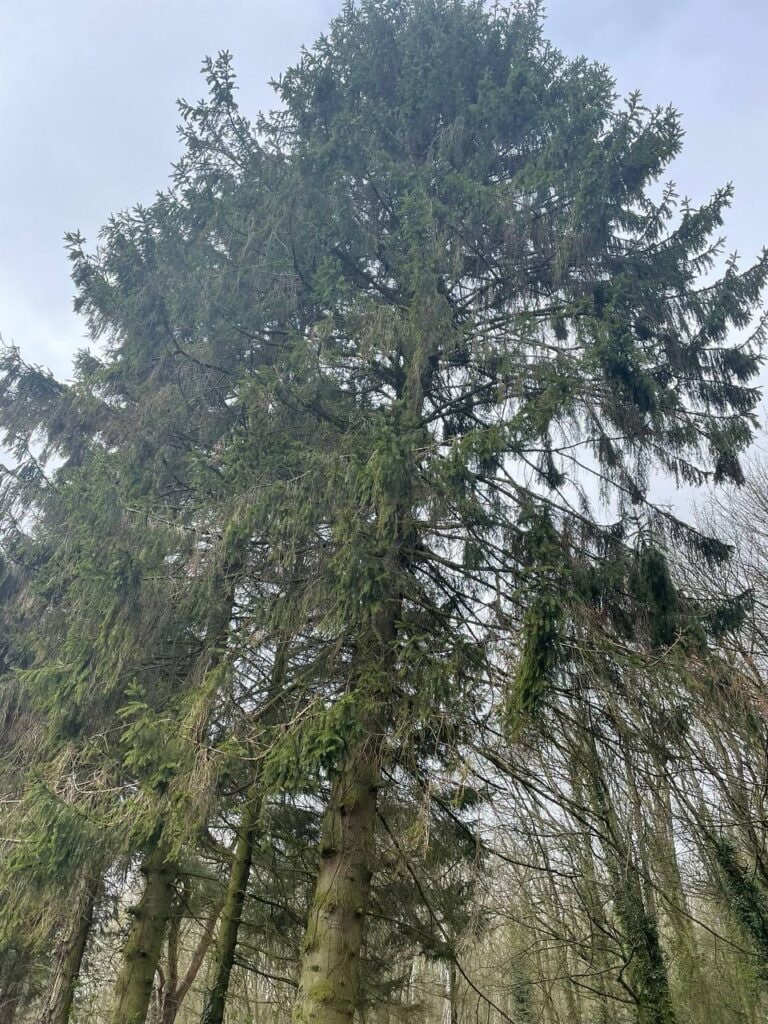Introduction
Trees add beauty, shade, and value to a property, but when they become unstable, they pose serious risks to people, buildings, and surrounding landscapes. An unstable tree can fall unexpectedly, leading to property damage, injuries, or even fatalities. Identifying and addressing potential hazards early through professional tree felling can prevent these dangers.
At PW Tree Surgeons, we specialise in expert tree felling services in Paddock Wood, Kent, ensuring the safe removal of hazardous trees. This article explores the risks of unstable trees and how proper felling can protect your property and loved ones.
Key Takeaways
- Unstable trees pose a significant risk to homes, vehicles, and pedestrians.
- Signs of instability include leaning, root damage, and dead branches.
- Tree felling is often the safest solution for trees that cannot be stabilised.
- Professional assessment ensures trees are removed safely and efficiently.
- Regular inspections help prevent tree-related accidents before they occur.
The Dangers of Unstable Trees
1. Risk of Falling Branches
Dead or weakened branches can fall at any time, especially during high winds or storms. This can cause:
- Damage to property, including roofs, windows, and vehicles.
- Injury to pedestrians, especially in public spaces or gardens.
- Increased risk of power line interference, leading to electrical hazards.
2. Complete Tree Collapse
A structurally weak tree may suddenly topple, particularly during extreme weather. Factors that contribute to full tree collapse include:
- Decayed or hollow trunks that can no longer support the tree’s weight.
- Severely leaning trees with weakened root structures.
- Excessive weight imbalance caused by storm damage or disease.
3. Root System Failure
Tree roots play a crucial role in anchoring the tree. When roots are damaged by soil erosion, construction work, or fungal infections, the tree’s stability is compromised. Signs of root failure include:
- Exposed or decayed roots.
- Soil heaving around the base of the tree.
- Visible gaps between the ground and the tree’s trunk.
4. Increased Liability for Property Owners
If an unstable tree on private property causes damage or injury, the owner may be held responsible. Taking proactive measures, such as professional tree inspections and removal when necessary, can help mitigate legal and financial risks.
How Tree Felling Prevents Accidents
1. Eliminating Dangerous Trees Before They Fall
When a tree is beyond saving due to disease, decay, or structural weakness, felling is the safest option. Removing a hazardous tree prevents unexpected collapses and ensures safety.
2. Preventing Storm Damage
Weak trees are highly vulnerable to storms. Preemptive felling can:
- Reduce the likelihood of storm-related property damage.
- Prevent fallen trees from blocking roads or driveways.
- Minimise risks to overhead power lines.
3. Creating a Safer Outdoor Space
Tree felling is essential for maintaining safe public and private spaces. Whether in residential gardens, commercial properties, or public parks, removing unstable trees ensures outdoor areas remain secure and accessible.
When to Consider Tree Felling
1. The Tree Shows Clear Signs of Instability
Signs that indicate a tree may require removal include:
- A noticeable lean towards structures or walkways.
- Extensive deadwood in the upper branches.
- Large cracks or splits in the trunk.
- Fungal growth, which suggests internal decay.
2. The Tree is Too Close to Buildings or Infrastructure
If a tree is growing dangerously close to a home, fence, or utility line, its roots or branches can cause structural damage. In cases where pruning is not sufficient, complete removal may be the best solution.
3. Disease or Pests Have Weakened the Tree
Diseased or pest-infested trees can deteriorate rapidly, becoming unsafe. Common conditions that may require felling include:
- Ash dieback, which weakens branches and increases breakage risks.
- Dutch elm disease, which spreads rapidly and kills trees.
- Severe infestations of wood-boring insects that compromise structural integrity.
4. The Tree is Obstructing Development or Landscaping Plans
Sometimes, trees need to be removed to make way for property improvements, extensions, or landscaping projects. Ensuring the safe removal of trees prevents disruptions and preserves the aesthetics of the surrounding area.
The Importance of Professional Tree Felling
Tree felling is a complex process that requires careful planning and execution. Hiring professionals ensures:
- Safe removal without causing damage to nearby structures.
- Compliance with local regulations and tree preservation laws.
- Proper disposal and recycling of tree materials.
At PW Tree Surgeons, we provide expert tree felling services in Paddock Wood, Kent, ensuring that hazardous trees are removed efficiently and safely.
Conclusion
Unstable trees pose significant risks, from falling branches to full tree collapse. Identifying and addressing these hazards early through professional tree felling can prevent costly damage and ensure a safe outdoor environment. Regular tree inspections, combined with expert removal when necessary, help property owners avoid potential accidents and liabilities.
For professional tree felling services in Paddock Wood, Kent, PW Tree Surgeons provides safe and effective solutions. Contact us today for expert advice and assistance with your tree care needs.
Call us on: 01892 352895
Click here to find out more about PW Tree Surgeons
Click here to complete our contact form and see how we can help with your tree needs.
